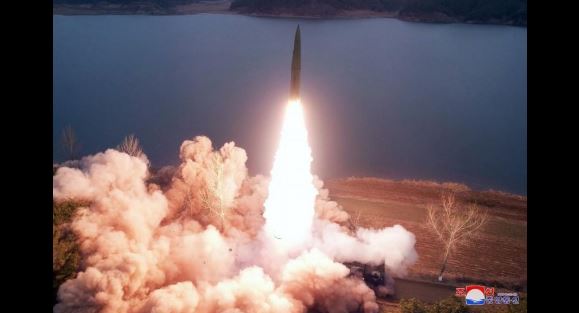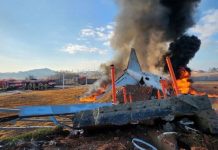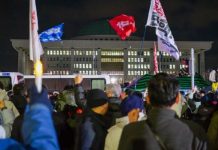
SEOUL, March 15 (UPI) — North Korea confirmed the launch of two medium-range ballistic missiles, warning that its military would “surely annihilate the enemy if they fight it,” state media reported Wednesday.
The missiles were fired Tuesday and were reported by the militaries of South Korea, the United States and Japan.
The test was conducted by a missile unit of the Korean People’s Army in the Jangyon area of South Hwanghae province, located in the country’s southwest, state-run Korean Central News Agency reported.
The unit launched “two ground-to-ground tactical ballistic missiles in a medium-range system for demonstration teaching,” the KCNA report said.
Photos in state media appeared to show that the missiles were the North’s KN-23, a highly maneuverable short-range ballistic missile similar to Russia’s Iskander. The missiles hit a target islet roughly 380 miles away in the sea off the northeast coast, the report said.
“Saying that they will surely annihilate the enemy if they fight it, the commander of the unit resolved to thoroughly have the ability to fully carry out its duty of fire assault anytime by further intensifying the training of every firepower assault company,” KCNA said.
The weapons test was the latest to take place during U.S.-South Korea Freedom Shield joint military exercises, which kicked off Monday and are scheduled to run until March 23.
The North fired cruise missiles from a submarine Sunday and launched at least six short-range ballistic missiles into the sea three days earlier in what North Korean leader Kim Jong Un called preparation for an “actual war response.”
North Korea has frequently condemned the allies’ joint drills as preparation for an invasion and warned last month of “unprecedentedly persistent and strong counteractions” to the exercise.
The Freedom Shield exercise consists of live field drills and computer-simulation command post exercises at a scale not seen in five years.
On Wednesday, South Korean Defense Minister Lee Jong-sup visited wartime command bunkers and emphasized that the drills reflected a changing security situation on the Korean Peninsula due to advancing North Korean nuclear and missile threats.
“Unlike the past, this exercise will be conducted day and night for 11 consecutive days, which will increase your fatigue, but it will be more practical while maintaining a firm military readiness posture,” he said at the Capital Defense Command in southern Seoul.
The allies’ joint exercises had been scaled down or canceled in recent years due to the COVID-19 pandemic as well as efforts to improve relations with North Korea under former U.S. President Donald Trump and former South Korean President Moon Jae-in.
On Wednesday, retired South Korean Lt. Gen. Chun In-bum said the lapse in training has had an impact on the readiness of troops on the Peninsula.
“The alliance was able to maintain the efficiency of their commanders and staff by adjusting the scale and tone of the joint exercises,” Chun said in a briefing with international media in downtown Seoul.
“But then they stopped conducting tactical training,” he said. “Because of these happenstances, there was a slack in readiness, which is inexcusable.”





